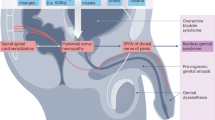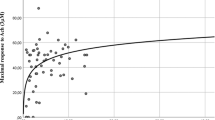Abstract
The sexual medicine field has been in mode of revolution until recently. Like all other fields of biomedical research, the economic situation around the world has had a negative impact on the field's momentum—research funding bodies, regulatory bodies and pharmaceutical companies seem to have placed sexual medicine in their low-priority list. But this is not the only challenge the field is facing. The successful development of phosphodiesterase type 5 (PDE5) inhibitors for treatment of erectile dysfunction (ED) means that research in this area seems to have slowed. However, there remain several unmet medical needs within sexual medicine such as premature ejaculation, severe ED and hypoactive sexual desire disorder, which await novel therapeutic approaches. Despite these challenges, research into finding and developing such therapies is likely to continue in the sexual medicine field, in an effort to improve the lives of our patients, who wait for effective therapies.
This is a preview of subscription content, access via your institution
Access options
Subscribe to this journal
Receive 12 print issues and online access
$209.00 per year
only $17.42 per issue
Buy this article
- Purchase on Springer Link
- Instant access to full article PDF
Prices may be subject to local taxes which are calculated during checkout
Similar content being viewed by others
References
Schultheiss, D. & Glina, S. Highlights from the history of sexual medicine. J. Sex. Med. 7, 2031–2043 (2010).
Sigusch, V. The birth of sexual medicine: Paolo Mantegazza as pioneer of sexual medicine in the 19th century. J. Sex. Med. 5, 217–222 (2008).
Goldstein, I. Looking at sexual behaviour 60 years after Kinsey. J. Sex. Med. 7 (Suppl. 5), 246–247 (2010).
Hayes, R. D. Circular and linear modelling of female sexual desire and arousal. J. Sex. Res. 48, 130–141 (2011).
Lewis, R. W. G. History of the International Society of Sexual Medicine (ISSM)—the beginnings. J. Sex. Med. 5, 740–745 (2008).
Parish, S. J. & Clayton, A. H. Sexual medicine education: review and commentary. J. Sex. Med. 4, 259–267 (2007).
Platano, G., Margraf, J., Alder, J. & Bitzer, J. Psychosocial factors and therapeutic approaches in the context of sexual history taking in men: a study conducted among Swiss general practitioners and urologists. J. Sex. Med. 5, 2533–2556 (2008).
Munos, B. Lessons from 60 years of pharmaceutical innovation. Nat. Rev. Drug Discov. 8, 959–968 (2009).
Arrowsmith, J. A decade of change. Nat. Rev. Drug Discov. 11, 17–18 (2012).
Dunn, M. K. Timing of patent filing and market exclusivity. Nat. Rev. Drug Discov. 10, 487–488 (2011).
Harrison, C. Patent watch: the patent cliff steepens. Nat. Rev. Drug Discov. 10, 12–13 (2011).
Mullard, A. 2011 FDA drug approvals. Nat. Rev. Drug Discov. 11, 91–94 (2012).
Paul, S. M. et al. How to improve R.& D productivity: the pharmaceutical industry's grand challenge. Nat. Rev. Drug Discov. 9, 203–214 (2010).
Kola, I. The state of innovation in drug development. Clin. Pharmacol. Ther. 83, 227–230 (2008).
Cohen, F. J. Macro trends in pharmaceutical innovation. Discov. Med. 5, 153–158 (2005).
Scannell, J. W., Blanckley, A., Boldon, H. & Warrington, B. Diagnosing the decline in pharmaceutical R.&D efficiency. Nat. Rev. Drug Discov. 11, 191–200 (2012).
Fitzhenry, D. & Sandberg, L. Female sexual dysfunction. Nat. Rev. Drug Discov. 4, 99–100 (2005).
McMurray, G., Casey, J. H. & Naylor, A. M. Animal models in urological disease and sexual dysfunction. Br. J. Pharmacol. 147 (Suppl. 2), S62–S79 (2006).
Cellek, S., Foxwell, N. A. & Moncada, S. Two phases of nitrergic neuropathy in streptozotocin-induced diabetic rats. Diabetes 52, 2353–2362 (2003).
Kola, I. & Landis, J. Can the pharmaceutical industry reduce attrition rates? Nat. Rev. Drug Discov. 3, 711–715 (2004).
Woodcock, J. & Woosley, R. The FDA critical path initiative and its influence on new drug development. Annu. Rev. Med. 59, 1–12 (2008).
Lappin, G. et al. Use of microdosing to predict pharmacokinetics at the therapeutic dose: experience with 5 drugs. Clin. Pharmacol. Ther. 80, 203–215 (2006).
Oosterhuis, B. Trends in microdosing and other exploratory human pharmacokinetic studies for early drug development. Bioanalysis 2, 377–379 (2010).
Lewis, R. W. et al. Definitions/epidemiology/risk factors for sexual dysfunction. J. Sex. Med. 7, 1598–1607 (2010).
Davis, S. R. et al. Testosterone for low libido in postmenopausal women not taking estrogen. N. Engl. J. Med. 359, 2005–2017 (2008).
Moynihan, R. The marketing of a disease: female sexual dysfunction. BMJ 330, 192–194 (2005).
Giraldi, A. Classifying female sexual dysfunction. In Cancer and Sexual Health (eds Mulhall, J. P., Incrocci, L., Goldstein, I. & Rosen, R.) 93–103 (Springer Science+Business Media, New York, 2011).
Hayes, R. D. Assessing female sexual dysfunction in epidemiological studies: why is it necessary to measure both low sexual function and sexually-related distress? Sex. Health 5, 215–218 (2008).
Fugl-Meyer, A. R., Melin, R. & Fugl-Meyer, K. S. Life satisfaction in 18- to 64-year-old Swedes: in relation to gender, age, partner and immigrant status. J. Rehabil. Med. 34, 239–246 (2002).
Shifren, J. L., Monz, B. U., Russo, P. A., Segreti, A. & Johannes, C. B. Sexual problems and distress in United States women: prevalence and correlates. Obstet. Gynecol. 112, 970–978 (2008).
Basson, R. Pharmacotherapy for women's sexual dysfunction. Expert Opin. Pharmacother. 10, 1631–1648 (2009).
Salonia, A. et al. Physiology of women's sexual function: basic knowledge and new findings. J. Sex. Med. 7, 2637–2660 (2010).
Chivers, M. L. & Rosen, R. C. Phosphodiesterase type 5 inhibitors and female sexual response: faulty protocols or paradigms? J. Sex. Med. 7, 858–872 (2010).
Chivers, M. L., Seto, M. C., Lalumière, M. L., Laan, E. & Grimbos, T. Agreement of self-reported and genital measures of sexual arousal in men and women: a meta-analysis. Arch. Sex. Behav. 39, 5–56 (2010).
Laan, E., Everaerd, W., van der Velde, J. & Geer, J. H. Determinants of subjective experience of sexual arousal in women: feedback from genital arousal and erotic stimulus content. Psychophysiology 32, 444–451 (1995).
Both, S. et al. Unconscious classical conditioning of sexual arousal: evidence for the conditioning of female genital arousal to subliminally presented sexual stimuli. J. Sex. Med. 5, 100–109 (2008).
Nurnberg, H. G. et al. Sildenafil treatment of women with antidepressant-associated sexual dysfunction: a randomized controlled trial. JAMA 300, 395–404 (2008).
Wierman, M. E. et al. Endocrine aspects of women's sexual function. J. Sex. Med. 7, 561–585 (2010).
Pfaus, J. G. Pathways of sexual desire. J. Sex. Med. 6, 1506–1533 (2009).
Kingsberg, S. A. The testosterone patch for women. Int. J. Impot. Res. 17, 465–466 (2005).
Clayton, A. H., Dennerstein, L., Pyke, R. & Sand, M. Flibanserin: a potential treatment for hypoactive sexual desire disorder in premenopausal women. Women's Health 6, 639–653 (2010).
Thorp, J. et al. Treatment of hypoactive sexual desire disorder in premenopausal women: efficacy of flibanserin in the DAISY study. J. Sex. Med. 9, 793–804 (2012).
Derogatis, L. R. et al. Treatment of hypoactive sexual desire disorder in premenopausal women: efficacy of flibanserin in the VIOLET Study. J. Sex. Med. 9, 1074–1085 (2012).
Lenzer, J. Boehringer Ingelheim withdraws libido drug for women. BMJ 341, c5701 (2010).
Labrie, F. et al. Intravaginal dehydroepiandrosterone (Prasterone), a physiological and highly efficient treatment of vaginal atrophy. Menopause 16, 907–922 (2009).
van der Made, F. et al. The influence of testosterone combined with a PDE5-inhibitor on cognitive, affective, and physiological sexual functioning in women suffering from sexual dysfunction. J. Sex. Med. 6, 777–790 (2009).
Petersen, C. D., Lundvall, L., Kristensen, E. & Giraldi, A. Vulvodynia. Definition, diagnosis and treatment. Acta Obstet. Gynecol. Scand. 87, 893–901 (2008).
Brotto, L. A. et al. A brief mindfulness-based cognitive behavioral intervention improves sexual functioning versus wait-list control in women treated for gynecologic cancer. Gynecol. Oncol. 125, 320–325 (2012).
Brotto, L. A., Seal, B. N. & Rellini, A. Pilot study of a brief cognitive behavioral versus mindfulness-based intervention for women with sexual distress and a history of childhood sexual abuse. J. Sex Marital Ther. 38, 1–27 (2012).
Cellek, S., Rees, R. W. & Kalsi, J. A Rho-kinase inhibitor, soluble guanylate cyclase activator and nitric oxide-releasing PDE5 inhibitor: novel approaches to erectile dysfunction. Expert Opin. Investig. Drugs 11, 1563–1573 (2002).
Albersen, M., Shindel, A. W., Mwamukonda, K. B. & Lue, T. F. The future is today: emerging drugs for the treatment of erectile dysfunction. Expert Opin. Emerg. Drugs 15, 467–480 (2010).
US National Library of Medicine. ClinicalTrials.gov [online], (2012).
US National Library of Medicine. ClinicalTrials.gov [online], (2012).
Oudot, A. et al. Combination of BAY 60–4552 and vardenafil exerts proerectile facilitator effects in rats with cavernous nerve injury: a proof of concept study for the treatment of phosphodiesterase type 5 inhibitor failure. Eur. Urol. 60, 1020–1026 (2011).
Claudino, M. A. et al. Long-term oral treatment with BAY 41–2272 ameliorates impaired corpus cavernosum relaxations in a nitric oxide-deficient rat model. BJU Int. 108, 116–122 (2011).
Shibuya, M. et al. Effect of AT877 on cerebral vasospasm after aneurysmal subarachnoid hemorrhage. Results of a prospective placebo-controlled double-blind trial. J. Neurosurg. 76, 571–577 (1992).
Fujita, H. et al. Acute vasodilator effects of inhaled fasudil, a specific Rho-kinase inhibitor, in patients with pulmonary arterial hypertension. Heart Vessels 25, 144–149 (2010).
Actelion reports arbitration results between subsidiary Cotherix, Inc. and Asahi Kasei Pharma Corporation. Actelion [online], (2009).
US National Library of Medicine. ClinicalTrials.gov [online], (2011).
Patel, M. V. et al. Discovery of 3-methyl-N-(1-oxy-3',4',5',6'-tetrahydro-2'H-[2,4'-bipyridine]-1'-ylmethyl)benzamide (ABT-670), an orally bioavailable dopamine D4 agonist for the treatment of erectile dysfunction. J. Med. Chem. 49, 7450–7465 (2006).
US National Library of Medicine. ClinicalTrials.gov [online], (2009).
Hakim, L., Van der Aa, F., Bivalacqua, T. J., Hedlund, P. & Albersen, M. Emerging tools for erectile dysfunction: a role for regenerative medicine. Nat. Rev. Urol. (in press).
Melman, A. & Davies, K. Gene therapy for erectile dysfunction: what is the future? Curr. Urol. Rep. 11, 421–426 (2010).
Author information
Authors and Affiliations
Contributions
Both authors researched data for article, made a substantial contribution to discussion of content, wrote the manuscript and reviewed and edited the manuscript before submission.
Corresponding author
Ethics declarations
Competing interests
The authors declare no competing financial interests.
Rights and permissions
About this article
Cite this article
Cellek, S., Giraldi, A. Challenges in sexual medicine. Nat Rev Urol 9, 537–542 (2012). https://doi.org/10.1038/nrurol.2012.134
Published:
Issue Date:
DOI: https://doi.org/10.1038/nrurol.2012.134
This article is cited by
-
The only available certification for sexual medicine: The Fellow of the European Committee Sexual Medicine (FECSM)
International Journal of Impotence Research (2022)
-
A Multiple Timepoint Pre-post Evaluation of a ‘Sexual Respect’ DVD to Improve Competence in Discussing Sex with Patients with Disability
Sexuality and Disability (2015)



